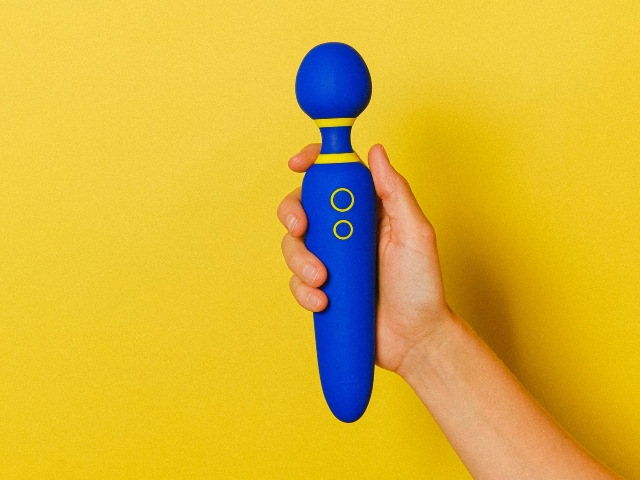[imagesource:pexels]
It is estimated that more than one billion people across the globe experience migraines, yet the perfect treatment for this malady is still out of reach.
Although there are lots of boere raad to deal with the debilitating condition, more and more people have lately admitted to trying out a rather unusual method to release the ‘tension’ – strapping a vibrator to their head.
While duct-taping a Happy Rabbit Slimline to your forehead seems extreme, many swear that it offers instant relief from the pain.
Though unconventional, the idea has historic roots.
Neuroscientist Jean-Martin Charcot noted in 1892 that extended carriage journeys helped patients with Parkinson’s disease to exhibit less tremor. He ascribed this to ‘periodic oscillations’ and constructed a chair that would mimic the movement, known as a “fauteuil trepidant.”
Later, his pupil Georges Gilles de la Tourette expanded the method to include a vibrating helmet to treat migraines. Both therapies provided “a powerful sedative for the nervous system,” wrote Charcot.
Recent studies are however revisiting the potential of vibration therapy for treating migraines, and are starting to reveal why vibration might be the breakthrough migraine sufferers have been seeking.
According to Tie-Quang Li at the Karolinska Institute in Stockholm, who has investigated the effects of vibration on migraines, “Some of the people using vibration as a therapy for migraine are experiencing huge benefits, it’s very exciting to see.”
Despite being such a common ailment, we know very little about how migraines are caused, or how to treat them. Migraines usually begin with an aura – visual disturbances such as flashing lights or shimmering spots – followed by pain, blurred vision, nausea, and sensitivity to light.
The scientific focus has recently shifted from early theories that blamed dilated blood vessels to the role of the hypothalamus, a brain structure that is involved with pain messages and inflammation of the meninges – the three layers of tissue that protect the brain and spinal cord.
Present-day medications for migraines narrow blood vessels or block pain network receptors, but they are not always effective and can have negative side effects. These treatments have now led to some people exploring alternative remedies, such as vibrators.
“I massaged my neck with a vibrator, and it completely removed the migraine pain I had been suffering with for years.”
Although some studies claim vibration only serves as a pain diversion, more recent data points to a possible explanation.
At the onset of a migraine attack, Jan-Erik Juto and Rolf Hallin at the Karolinska Institute introduced a vibrating balloon-equipped catheter into patients’ nostrils. The subjects then noted their level of migraine pain before, during, and following the fifteen-minute session.
The study showed promise: 17 out of 18 people reported at least 50% pain relief, compared with 3 of 17 people who received a placebo treatment. Even more significant, half of the people who received the vibrating treatment were completely pain-free 15 minutes after it finished, compared with only two in the placebo group.
Juto and Hallin speculate that nasal vibration targets a collection of nerve cells called the sphenopalatine ganglion (SPG). Located just under the nasal membrane, the SPG is connected to the hypothalamus. During a migraine attack, the hypothalamus is thought to lose control over a collection of structures in the brain called the limbic system, which affects how a person responds to pain.
By stimulating the SPG, and indirectly the hypothalamus, vibration may help restore control.
While the lab tests are encouraging, the researchers believe that DIY treatments at home, such as a Rabbit on your head, also bring benefits. Adriana LaGier at Grand View University in Iowa specifically looked into the use of vibrators by examining how a human cell reacts to being shaken by vibrating epithelial cells – the most common type of human cells – found throughout the body and brain.
According to his research, 15 minutes of vibration caused the cells to shrink and retract their microvilli (finger-like strands that normally project from the cell’s surface). They returned to normal shape after the vibrations stopped.
“Think of migraine as an architectural problem,” says LaGier.
The brain is inflamed, with thousands of cells rushing into the meninges, which expands and triggers nerves to shoot off pain signals. She suggests that as vibration makes cells smaller, they take up less space and reduce pressure on the meninges, thus no longer triggering a painful response.
Even the UK’s Migraine Trust is warming to the idea of vibration to treat migraines.
“Migraine symptoms can be debilitating and although there isn’t currently substantial evidence around vibrations in easing pain during an attack, we know many people find their own self-care treatments to supplement prescribed medication.”
There still needs to be a lot more studies done, but it all sounds legit. So, the next time your spouse bats your amorous advances because of ‘a headache’, simply pull out the ol’ Rabbit and some duct tape.
[source:wired]





